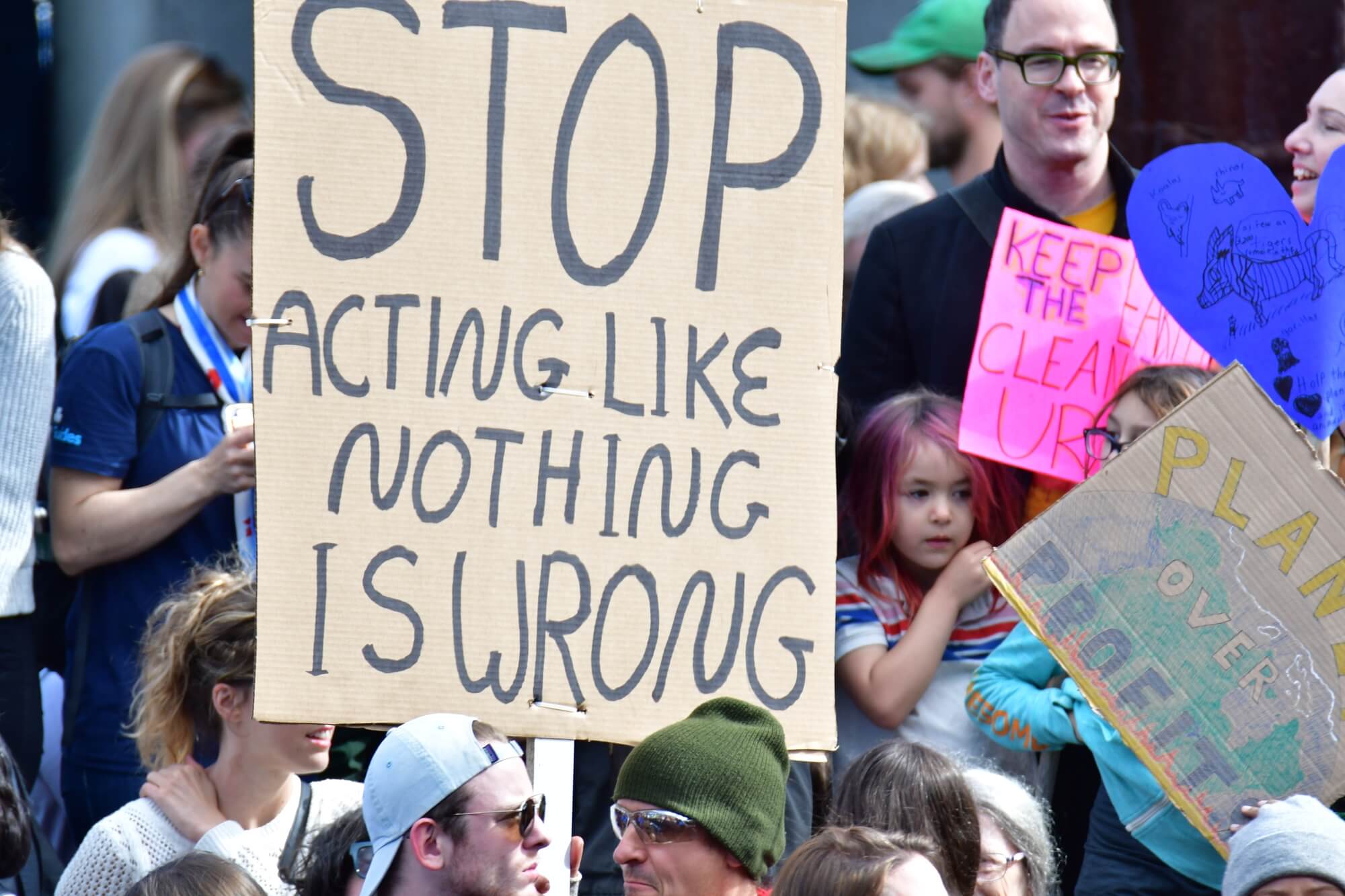The IPCC report - the International Panel on Climate Change contains a summary for non-scientist decision makers. These conclusions are a consensus of thousands of authors of the report and reflect the latest scientific research in every field. Man has caused warming, warming causes extreme weather Translation: Avi Blizovsky

A. The current state of the climate
A1. The findings show unequivocally that human activity has warmed the atmosphere, the ocean and the land. Extensive and rapid changes have occurred in the atmosphere, ocean, cryosphere and biosphere
A2. The extent of recent changes in the climate system as a whole and the current state of many aspects of the climate system are unprecedented over a time period of hundreds of years to thousands of years.
A3 The human-caused climate change is already affecting extreme weather and climate conditions and creating many events in every region around the world. Evidence of observed changes in extreme events such as heat waves, heavy precipitation, droughts and tropical cyclones, and especially their attribution to human influence, has been strengthened since the Fifth Assessment Report (AR5).
A4. Improved knowledge of climate processes, paleoclimatic evidence, and the response of the climate system to increased radiation provides an optimal estimate of equilibrium climate sensitivity of 3°C rise, with a narrower range compared to AR5
B. Possible future predictions about the climate
in 1. Global surface temperature will continue to rise at least until mid-century under all emission scenarios considered. During the 21st century, global warming will reach 1.5-2 degrees Celsius unless there are deep reductions in carbon dioxide (CO2) and other greenhouse gas emissions.
In 2. Many changes in the climate system are increasing in direct proportion to increasing global warming. They include an increase in the frequency and intensity of extreme heat waves on land and sea, heavy precipitation, in forms that harm agriculture and other environmental features in some areas, and a high rate of intense tropical cyclones, as well as a decrease in Arctic sea ice cover, land snow cover, and thawing of frozen ground.
in 3. Continued global warming is expected to further increase the global water cycle, including its variability, global monsoon precipitation, and the severity of wet and dry events.
in 4. Under scenarios of increasing CO2 emissions, the carbon sinks in the oceans and on land are expected to be less effective in slowing the accumulation of carbon dioxide in the atmosphere.
at 5. Many changes due to past and future greenhouse gas emissions are irreversible and will continue to affect the climate for hundreds to thousands of years, especially changes to the ocean, ice sheets and global sea level.
third. Climatic information for risk assessment and regional adaptation
C1. Natural drivers and internal variability will not produce enough to balance human-induced changes, especially at regional scales and in the near term, with little effect on global warming this century. This modulation is important to consider in planning a wide range of possible changes.
C2. With further global warming, each region is expected to increasingly experience multiple simultaneous changes in climate behavior. Changes in the number of extreme climate events will be more common at 2°C compared to 1.5°C global warming and even more common and/or more pronounced at higher warming levels.
C3. Low-probability outcomes such as ice sheet collapse, sudden changes in ocean circulation, some complex extreme events, and warming significantly greater than the very likely range of future warming cannot be ruled out.
d. Limiting climate change in the future
D.1 From a physical scientific point of view, limiting human-caused global warming to a certain level requires limiting cumulative CO2 emissions, reaching at least net zero CO2 emissions, along with strong reductions in other greenhouse gas emissions. Strong, rapid and sustained reductions in CH4 emissions will also limit the warming effect resulting from reduced aerosol pollution and improve air quality.
D2 Scenarios with low or very low greenhouse gas emissions (SSP1-1.9 and SSP1-2.6) lead within years to a reduction in the greenhouse effect and air quality compared to high and very high greenhouse gas emission scenarios (SSP3-7.0 or SSP5-8.5). In these contrasting scenarios, noticeable differences in global surface temperature trends will begin to emerge from natural variability within about 20 years, and over longer periods of time we will also see an effect on many other climatic parameters with high certainty.

One response
So it turns out that a new "scientific" report has come out that says - give us more and more and more money for theories that haven't worked for us until now, we updated them and got the same results that didn't work before and won't work again, but give us more and more money to research and enable us to hold our research institutes and international organizations and the whole house of cards we have built on pseudo-scientific information.
The report includes quite a lot of statements that are simply not true, but it doesn't matter because there is a "consensus" in the scientific community (that is, after we brought only those who agree with us to write the report, we threw out all those who agree with other universities, we convinced The media did not listen to them at all and threatened them in all kinds of ways).
But let's go beyond that and simply lie that there are more climate events in recent decades, that warming has never happened naturally and that carbon dioxide is a significant greenhouse gas in the atmosphere. In the meantime, you can simply ignore the sun, solar storms or even the universe or physics.
Guys at "Yaden", if you at all engage in science and promote it, then blindly accepting disproven theories is not really science. "Most scientists think" is not science either. What is certain is that taking a disproved theory and calling it "consensus" is really not science.